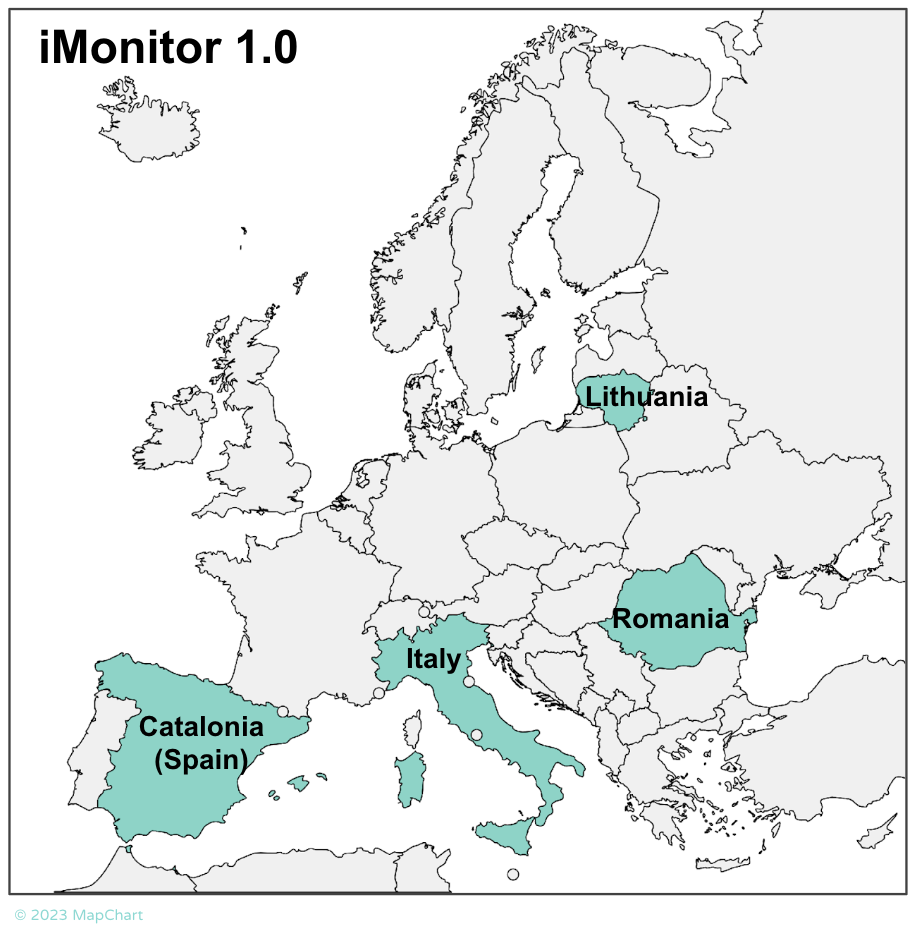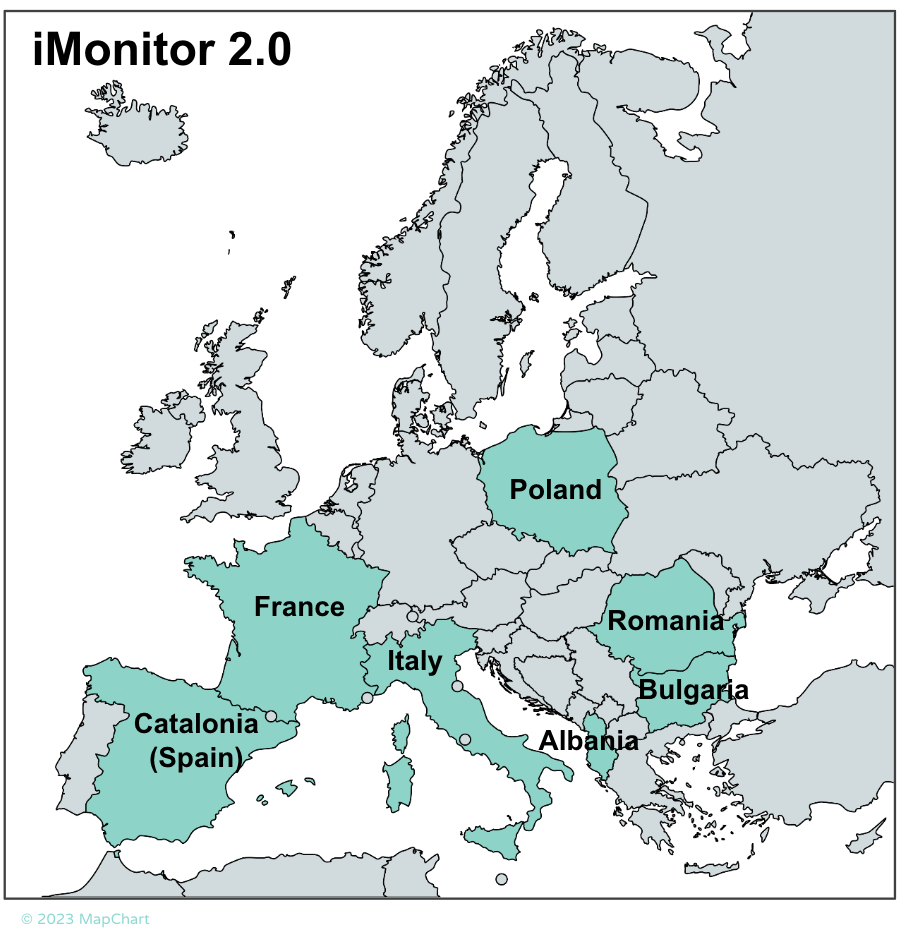iMonitor 1.0 to iMonitor 2.0: An Evolution in Scope, Partnerships, and Impact
Since its inception in May 2023, iMonitor 1.0 has been instrumental in pioneering a data-driven, civic-engagement methodology for monitoring irregularities in public procurement. Funded by the European Commission under the Internal Security Fund (ISF-2022-TF1-AG-CORRUPT; Project No. 101103267), this two-year initiative enabled civil society organisations to identify, monitor, and report on high-risk public contracts across four European regions: Catalonia (Spain), Italy, Lithuania, and Romania.
The project rested on three central pillars. First, it employed a data-driven risk assessment methodology, using OpenTender.eu to detect contracts with elevated corruption risk. Second, it fostered civic monitoring by training, mentoring, and supporting volunteers to conduct in-depth investigations of selected public contracts. Third, it introduced a structured reporting framework, utilising Monithon’s civic monitoring platform to ensure that findings were consistently documented and could be escalated when irregularities were suspected.
Through these methods, iMonitor 1.0 achieved tangible results. A total of 101 public contracts, collectively worth around €140 million, were monitored. Nearly 200 trained monitors, representing 27 organisations, took part in the initiative. In several cases, findings from the monitoring activities in Italy and Romania triggered investigative follow-ups, demonstrating the real impact of civic oversight in procurement. The project’s Final Conference in Brussels in March 2025 marked not only the conclusion of this phase but also set the stage for a more ambitious continuation—iMonitor 2.0.
iMonitor 2.0: Expanded Geography, New Partners, and Thematic Focus
Launched in June 2025 with a Kick-off Meeting in Budapest, iMonitor 2.0 builds directly on the achievements of its predecessor while expanding both its scope and ambition. The most visible change lies in the geographic reach: whereas iMonitor 1.0 was implemented in four regions, the new project extends activities across seven countries. Alongside Catalonia, Italy, and Romania, the consortium now includes partners in Poland, Bulgaria, Albania, and France.
The composition of the consortium has also evolved. Returning NGO partners are now joined by new civil-society organisations and, importantly, public institutions. Romania’s National Agency for Public Procurement (ANAP) and Catalonia’s Anti-Fraud Office (OAC) are formally part of the consortium, while other public authorities from each country are part of the project network. This diversification underscores the intention to embed civic monitoring more firmly within institutional frameworks and to foster stronger cooperation between watchdog organisations and public authorities.
Thematic priorities have also been broadened. While iMonitor 1.0 concentrated primarily on high-risk procurement processes in general, iMonitor 2.0 places special emphasis on climate-related investments and construction-sector projects. These areas are not only financially significant but also carry considerable implications for sustainability, infrastructure, and public trust, making them critical fields for enhanced oversight.
From Foundation to Amplified Impact
The progression from iMonitor 1.0 to iMonitor 2.0 represents more than just a continuation of funding. It signals a deliberate evolution: from a successful pilot project operating in four regions to a larger, more diversified initiative spanning seven countries, encompassing both civil-society and public-sector partners, and targeting sectors of particular societal relevance.
iMonitor 1.0 demonstrated that data-driven civic monitoring can generate concrete insights, empower citizens, and prompt institutional responses. iMonitor 2.0 now seeks to amplify this impact by extending the geographic and thematic scope, embedding the practice in public institutions, and addressing sectors at the intersection of public spending, sustainability, and social well-being.
This transition illustrates continuity and innovation. Visitors to this website can see iMonitor 2.0 not as a departure from the original project but as its logical and ambitious next step—a phase that both consolidates the methods developed in iMonitor 1.0 and expands their application to new contexts, partners, and challenges.


